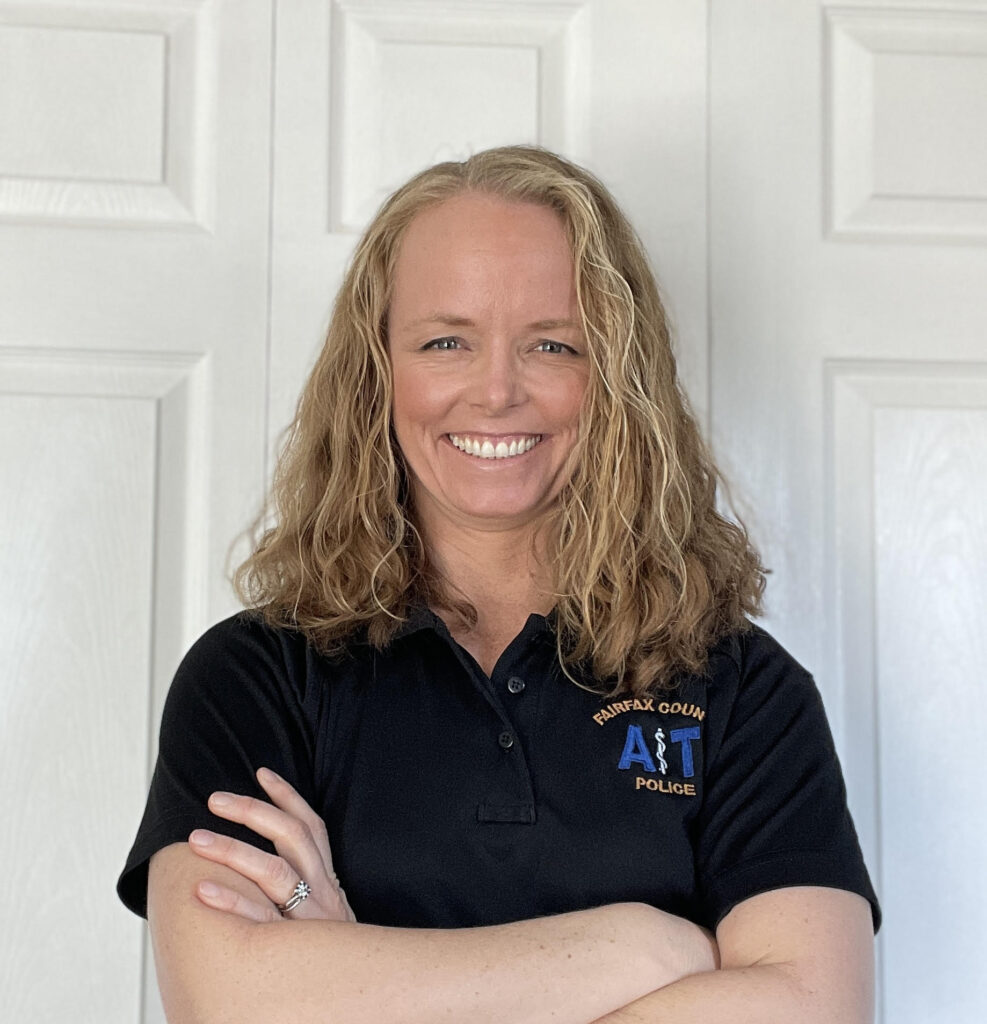By Katie Caldwell
Athletic training wasn’t the career path Anna Sedory originally planned for.
“I just sort of fell into it,” the director of the Fairfax County Police Department’s Injury Care and
Prevention Program explained. She entered college as a kinesiology major, but an intro to athletic
training class was what piqued her interest.

“I loved anatomy, I loved science, I loved the medicine, I loved the sports, movements and all those
things were involved,” she said. “I was hooked from that moment on.”
From there the plan was to become a head athletic trainer at a California community college, which she
accomplished in 2006 when she took over at American River College.
Public safety/law enforcement athletic training wasn’t on her radar at the time, as there were few
opportunities and it was rarely talked about.
But a move from California to Virginia in 2011 to be closer to her now husband, Jay, took her down
another unexpected career path. While looking for jobs at small colleges, Sedory found out there was a
different culture for community college sports in Virginia.
“Sometimes they’ll have recreational sports, but they won’t have competitive sports,” she said.
That’s when Sedory came across a job with the Drug Enforcement Agency that seemed like it would be a
good fit.
“It was a good salary, promised a little bit of life balance,” she said. “It hit all the requirements for a job.”
Sedory described the transition from the collegiate atmosphere to law enforcement as being logistical.
“You’re coming into a life-or-death training,” she explained. “It’s not like college, you have to partner
with them and say ‘how do we make this as safe as possible?’”
Now, nearly five years into her career with the Fairfax County Police Department, Sedory said her daily
workload is very different to what she dealt with in college sports.
She tries to get in early most days to take care of administrative tasks such as checking email. She also
reviews the most recent accident reports that were filed and reaches out to each person to offer her
services if needed.
Her clinic offers help on both an appointment and walk-in basis, making no two days the same. She’ll
spend her morning preparing rehab programs for officers who have appointments, while simultaneously
treating any other officers with injuries who walk through the door.
“And that’s where the chaos starts,” she joked. “At any given time I could have one-to-five patients.”
Then there’s the time she blocks off for special activities, which could be being available to provide first
aid for recruits being tasered as part of their training, special control tactics scenarios, or even SWAT school. She also has a satellite clinic on the other side of the county she goes to twice a month to make
herself more accessible to patients.
She also assists patients with case management with their workers compensation cases, helping officers
navigate through issues with the workers compensation company and county risk management or all to
ensure patients get the care they need as efficiently as possible.
In terms of the body, she said it requires applying a broader set of knowledge than she used with college
athletes.
“You have to know more about aging and its effect,” she said. Additionally, an athletic trainer in the law
enforcement environment needs to know more about chronic injury, chronic pain and various other
chronic health conditions officers suffer from.
The patient relationship is also different than what she was used to with college athletes.
“Athletes are used to having an athletic trainer around, so when they come to you, they expect to be
given a treatment plan, it’s part of the culture,” Sedory explained. “When you’re working with collegiate
athletes, you sort of have a captive audience to an extent.”
Officers, on the other hand, are used to being the ones helping, not seeking help.
“They never say ‘I need help,’” she said. “For them to walk through your door, they already trust you
enough to put that vulnerability aside and say you can work on this with me.”
“When I have a full office all the time, it’s very satisfying.”
